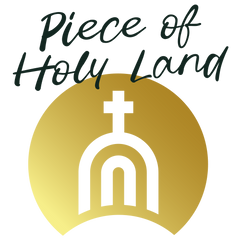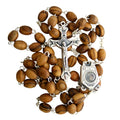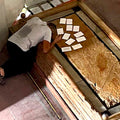Unlocking the Mysteries of the Rosary - A Path to Spiritual Growth

Exploring the Mysteries of Faith Through the Rosary
The Rosary is more than a string of beads; it is a profound tool for meditation and prayer that leads believers through the key events of Jesus Christ’s life. Each bead represents a step closer to the divine, inviting Christians to reflect on the mysteries of their faith with Mary as their guide.
The Mysteries of the Rosary are divided into four categories: Joyful, Sorrowful, Glorious, and Luminous, each offering a journey through pivotal moments in Christ’s life and ministry. Through these meditations, Christians deepen their understanding of faith, love, and sacrifice.
The Four Sets of Mysteries: A Closer Look
The Joyful Mysteries
These focus on the Incarnation and the early life of Jesus. They are traditionally prayed on Mondays and Saturdays.
- The Annunciation (Luke 1:26-38): Reflect on Mary’s humble acceptance of God’s will.
- The Visitation (Luke 1:39-56): Ponder Mary’s visit to Elizabeth and the joy of shared faith.
- The Nativity (Luke 2:1-20): Celebrate the birth of Jesus and the fulfillment of God’s promise.
- The Presentation in the Temple (Luke 2:22-38): Meditate on Mary and Joseph’s obedience to God’s law.
- The Finding of Jesus in the Temple (Luke 2:41-50): Contemplate the wisdom of the young Jesus and His dedication to His Father’s work.
The Sorrowful Mysteries
These reveal the depth of Christ’s suffering for humanity’s redemption. They are prayed on Tuesdays and Fridays.
- The Agony in the Garden (Matthew 26:36-46): Reflect on Jesus’s anguish and submission to the Father’s will.
- The Scourging at the Pillar (John 19:1): Consider the physical suffering endured by Christ.
- The Crowning with Thorns (Matthew 27:29): Ponder the mockery and humiliation of Jesus.
- The Carrying of the Cross (Luke 23:26-32): Meditate on Christ’s journey to Calvary, burdened by the weight of the Cross.
- The Crucifixion and Death of Jesus (Luke 23:33-46): Contemplate the ultimate sacrifice of Jesus for the salvation of the world.
The Glorious Mysteries
These celebrate the triumph of Jesus over sin and death, prayed on Wednesdays and Sundays.
- The Resurrection (Luke 24:1-12): Rejoice in the victory of life over death.
- The Ascension (Luke 24:50-53): Reflect on Christ’s return to the Father.
- The Descent of the Holy Spirit (Acts 2:1-41): Meditate on the birth of the Church and the empowerment of the Apostles.
- The Assumption of Mary (Revelation 12:1): Ponder Mary’s special role in salvation history.
- The Coronation of Mary as Queen of Heaven and Earth (2 Timothy 4:8): Celebrate Mary’s place in the heavenly kingdom.
The Luminous Mysteries
Introduced by Pope John Paul II in 2002, these focus on Jesus’s public ministry. They are prayed on Thursdays.
- The Baptism of Jesus (Matthew 3:13-17): Reflect on Jesus’s example of humility and obedience.
- The Wedding at Cana (John 2:1-12): Contemplate Mary’s intercession and Jesus’s first miracle.
- The Proclamation of the Kingdom (Mark 1:14-15): Ponder Jesus’s call to repentance and faith.
- The Transfiguration (Luke 9:28-36): Meditate on Christ’s divinity revealed to the Apostles.
- The Institution of the Eucharist (Luke 22:14-20): Rejoice in the gift of Christ’s body and blood.
The Rosary as a Daily Practice
Praying the Rosary daily offers a rhythm of reflection and spiritual renewal. It draws believers into a meditative state where the mysteries of faith come alive, fostering a deeper relationship with Christ and Mary. Incorporating the Rosary into daily life is an enriching way to stay connected to the divine.
How to Pray the Rosary: A Step-by-Step Guide
- Begin with the Sign of the Cross and recite the Apostles’ Creed.
- Pray an Our Father on the first large bead.
- Say three Hail Marys on the next three small beads, followed by a Glory Be.
- Announce the first mystery, meditate on it, and pray an Our Father.
- For each of the 10 beads of the decade, recite a Hail Mary, ending with a Glory Be and the Fatima Prayer.
- Repeat for each mystery.
- Conclude with the Hail Holy Queen and the Sign of the Cross.
Common Questions About the Rosary
Why are there 10 Hail Marys in a decade?
The number symbolizes completeness and represents the ten virtues of the Blessed Virgin Mary.
Can I pray the Rosary without beads?
Yes! While the beads help guide the prayer, the Rosary can be recited using your fingers or even mentally.
What’s the significance of praying the Rosary?
The Rosary is a meditative prayer that helps deepen one’s understanding of Christ’s life and fosters a personal connection with God.
Bring the Mysteries of the Rosary into Your Life
Owning a rosary crafted in the Holy Land, such as those made from olive wood or featuring Holy Soil medals, deepen the spiritual experience. Enhance your prayer life with Holy Land rosaries, such as an Olive Wood Rosary with Holy Water or a Mother of Pearl Rosary with Holy Soil in an Olive Wood Box. These sacred items, handcrafted with care in the Holy Land, connect you to the places where Jesus lived and ministered.
These rosaries not only deepen your connection to the Mysteries of the Rosary but also serve as cherished reminders of faith and the blessings of the Holy Land.
SHARE:






















